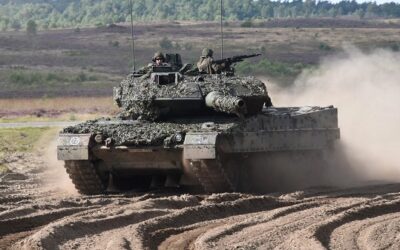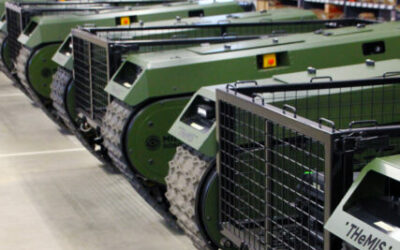Day 1 (August 8, 2017) SMD Symposium Report
MONS Correspondent Marty Kauchak files this end-of-the-day report from the Space and Missile Defense (SMD) Symposium, Von Braun Center in Huntsville, Alabama.
Raytheon‘s AN/SPY-6(V) Air and Missile Defense Radar (AMDR), is advancing on schedule through its Engineering and Manufacturing Development (EMD) acquisition phase. According to Scott Spence, Raytheon’s Director of Naval Radar Systems, “The programme transitioned to Low-Rate Initial Production [LRIP] in May and remains on track for delivery for the DDG 51 FLIGHT III destroyer.”
This May’s LRIP contract, the first exercised option, was for the production of the first three ship sets. The original AMDR contract, awarded in October 2013, was for EMD and testing, and included options for the production of a total of nine ship sets.
The EMD radar array was built and delivered to the Navy’s Pacific Missile Range Facility in Hawaii in May of 2016 for integration and testing. Spence recalled that since installation, the radar has tracked targets of increasing complexity, demonstrating that the radar meets its performance requirements. “It tracked integrated air and missile defence targets of opportunity, satellites and aircraft, including the first dedicated Ballistic Missile Defense test event in March 2017 where AMDR searched for, acquired and tracked a ballistic missile test target.”
It has since participated in other tests using targets of opportunity, and was scheduled to complete additional dedicated testing in through this summer.
Spence was to asked to compare and contrast AMDR’s capabilities with other systems, the AN/SPY-1D(V) radar, for instance. The corporate programme leader responded, “AMDR provides greater detection ranges, increased discrimination accuracy, higher reliability and sustainability, and lower total ownership cost as well as a host of other advantages when compared to the current AN/SPY-1D(V) radar onboard today’s destroyers. It is an Active Electronically Scanned Array (AESA) S-band radar that provides more sensitivity and resources to cover more missions and more targets.”
AMDR is also designed for scalability, reliability and ease of production, with the SPY-6(V) incorporating innovative and proven technologies, including Radar Modular Assemblies (RMAs), digital beamforming and Gallium Nitride (GaN), to, “offer exceptional radar capabilities.”
This is one of an increasing number of systems in the missile defense domain using GaN-based components.
Spence, continued: “It is the first scalable radar, built with RMAs – radar building blocks. Each RMA, roughly 2ft [.6m] x2x2ft in size, is a standalone radar that can be grouped to build any size radar aperture, from a single RMA to configurations larger than currently fielded radars. All cooling, power, command logic and software are scalable, allowing for new instantiations without significant radar development costs.”
The SPY-6(V) AMDR being developed for the Navy’s DDG 51 FLIGHT III destroyer stacks 37 RMAs to form a 14-foot by 14-foot array. “This configuration enhances the Navy’s ability to detect, identify and track air, surface and ballistic missile threats – delivering more than 30 times the sensitivity of the currently deployed SPY-1D radar, in similar space and at a comparable cost,” Spence added.
And as an important return on investment for the US Navy customer, Raytheon is bringing to bear other efficiencies, best practices and other outcomes from other technology thrusts in this space.
While AMDR is currently the programme of record for the FLIGHT III “Arleigh Burke” (DDG 51)-class destroyers, in August 2016, Raytheon was also awarded the contract for the Enterprise Air Surveillance Radar (EASR), the US Navy’s next generation radar for aircraft carriers and amphibious warfare ships, providing simultaneous anti-air and anti-surface warfare, electronic protection and air traffic control capabilities.
Spence pointed out “EASR is built on the same RMA architecture matured throughout development of AMDR for the DDG 51 FLIGHT III destroyers, in a tailored configuration to deliver superior capability to meet the mission requirements of carriers and amphibious ships. EASR is a 9 RMA configuration – which is roughly equivalent to the sensitivity of the current SPY-1D(V) radar on today’s destroyers, and at only 20% of the size of the legacy AN/SPS-48. These are considerable enhancements over the radars in service on current (and future) EASR-designated ship classes.”
EASR is configured in two variants: a rotating, single-face array replacing the legacy AN/SPS-48 and AN/SPS-49 radars on amphibious warfare ships; and a three-fixed-face configuration for aircraft carriers, starting with CVN-79.
“The commonality – in both hardware and software – with AMDR offers a host of advantages, including software re-use and hardware maturity, as well as maintenance; training; logistics; and lifecycle support,” Spence emphasised.
With respect to the Raytheon-led AMDR industry team, Spence pointed out, “through open and strategic sourcing, we formed a balanced mix of large and small industry partners that bring a lot of experience and agility to our team. Some of those teammates include: Anaren Inc. [East Syracuse, New York] – providing complex RF Beamforming assemblies; Major Tool and Machine [Indianapolis, Indiana] – provides the array structure.”
Marty Kauchak
























